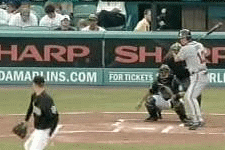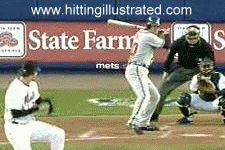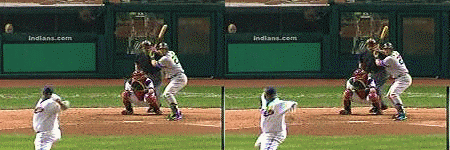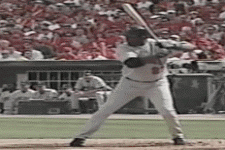Yes, I pretty much agree with how you've stated it.
The problem I have experienced is the area between a little forward momentum and total shift. Many many players get beyond a "little forward momentum" to the point that they have actually shifted their center of mass, although not totally prior to "go".
This really slows them down.
Here is a side by side that is really telling......if you understand.

On the left, the weight shift too far too soon....and isn't available at "go" and the system bogs down.
On the right the shift is at "go" and gives a large boost to the launch.
The key to look for is the degree of hip opening prior to go. On the left, weight has shifted but the hips are pretty closed at "go". On the right the hips open earlier/more and then the weight shift.
Another way of saying it is.......on the right.....he rides the back leg, he maintains the load in the rear hip, until "Go". On the left he lost the load of the rear leg by shifting too far too soon, then swung.
For those trying to learn.....notice the difference in the hips.

















